Muhammad Awais Javed
Intelligent and Secure Radio Environments for 6G Vehicular Aided HetNets: Key Opportunities and Challenges
Oct 05, 2022



Abstract:Reconfigurable meta-surfaces are emerging as a novel and revolutionizing technology to enable intelligent wireless environments. Due to the low cost, improved efficiency, and passive nature of reflecting elements, it is becoming possible to program and control the wireless environment. Since wireless physical layer technologies can generally adapt to the wireless environment, their combination with reconfigurable surfaces and deep learning approaches can open new avenues for achieving secure 6G vehicular aided heterogeneous networks (HetNets). Motivated by these appealing advantages, this work provides an intelligent and secure radio environment (ISRE) paradigm for 6G vehicular aided HetNets. We present an overview of enabling technologies for ISRE-based 6G vehicular aided HetNets. We discuss features, design goals, and applications of such networks. Next, we outline new opportunities provided by ISRE-based 6G vehicular HetNets and we present a case study using the contextual bandit approach in terms of best IRS for secure communications. Finally, we discuss some future research opportunities.
Cooperative Backscatter NOMA with Imperfect SIC: Towards Energy Efficient Sum Rate Maximization in Sustainable 6G Networks
Jul 07, 2022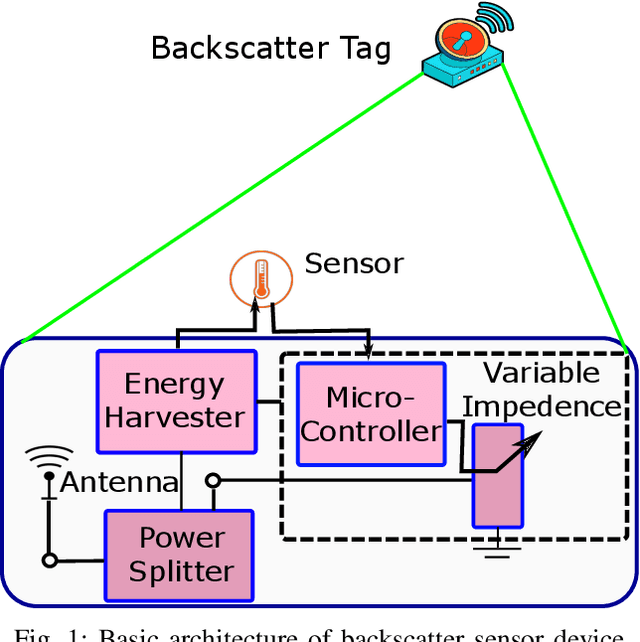
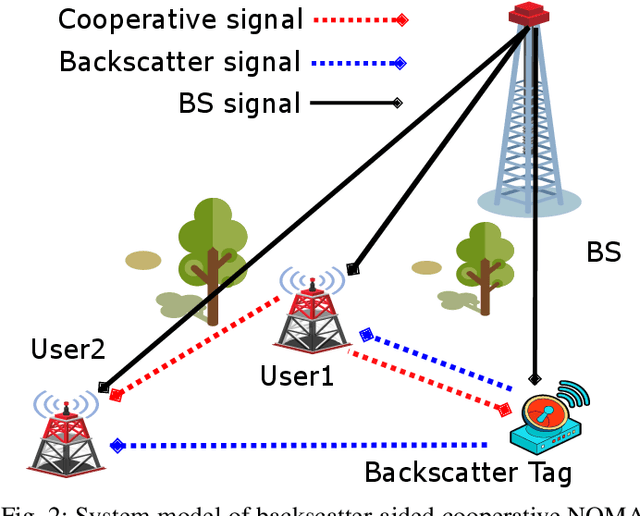
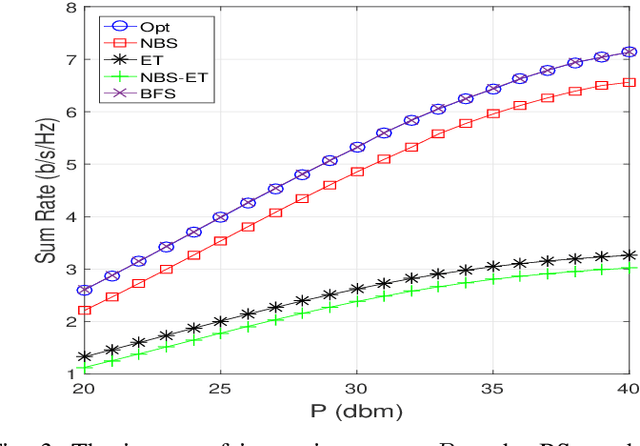
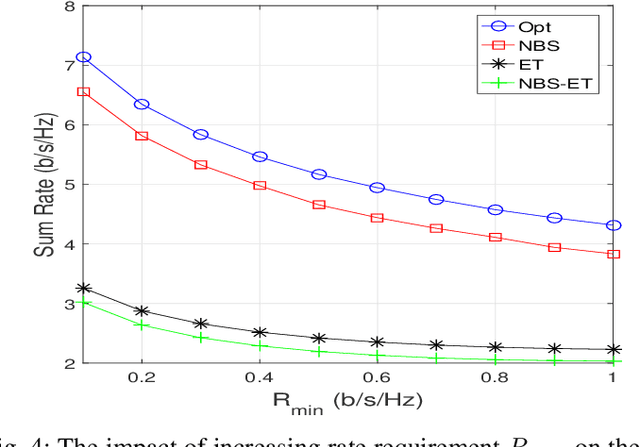
Abstract:The combination of backscatter communication with non-orthogonal multiple access (NOMA) has the potential to support low-powered massive connections in upcoming sixth-generation (6G) wireless networks. More specifically, backscatter communication can harvest and use the existing RF signals in the atmosphere for communication, while NOMA provides communication to multiple wireless devices over the same frequency and time resources. This paper has proposed a new resource management framework for backscatter-aided cooperative NOMA communication in upcoming 6G networks. In particular, the proposed work has simultaneously optimized the base station's transmit power, relaying node, the reflection coefficient of the backscatter tag, and time allocation under imperfect successive interference cancellation to maximize the sum rate of the system. To obtain an efficient solution for the resource management framework, we have proposed a combination of the bisection method and dual theory, where the sub-gradient method is adopted to optimize the Lagrangian multipliers. Numerical results have shown that the proposed solution provides excellent performance. When the performance of the proposed technique is compared to a brute-forcing search technique that guarantees optimal solution however, is very time-consuming, it was seen that the gap in performance is actually 0\%. Hence, the proposed framework has provided performance equal to a cumbersome brute-force search technique while offering much less complexity. The works in the literature on cooperative NOMA considered equal time distribution for cooperation and direct communication. Our results showed that optimizing the time-division can increase the performance by more than 110\% for high transmission powers.
Opportunities for Physical Layer Security in UAV Communication Enhanced with Intelligent Reflective Surfaces
Mar 31, 2022



Abstract:Unmanned Aerial Vehicles (UAVs) are an important component of next-generation wireless networks that can assist in high data rate communications and provide enhanced coverage.Their high mobility and aerial nature offer deployment flexibility and low-cost infrastructure support to existing cellular networks and provide many applications that rely on mobile wireless communications. However, security is a major challenge in UAV communications, and Physical Layer Security (PLS) is an important technique to improve the reliability and security of data shared with the assistance of UAVs. Recently, Intelligent Reflecting Surfaces (IRS) have emerged as a novel technology to extend and/or enhance wireless coverage by re-configuring the propagation environment of communications. This paper provides an overview of how IRS can improve the PLS of UAV networks. We discuss different use cases of PLS for IRS enhanced UAV communications and briefly review the recent advances in this area. Then based on the recent advances, we also present a case study that utilizes alternate optimization to maximize the secrecy capacity for IRS enhanced UAV scenario in the presence of multiple eavesdroppers. Finally, we highlight several open issues and research challenges to realize PLS in IRS enhanced UAV communications.
NOMA-enabled Backscatter Communications for Green Transportation in Automotive-Industry 5.0
Mar 10, 2022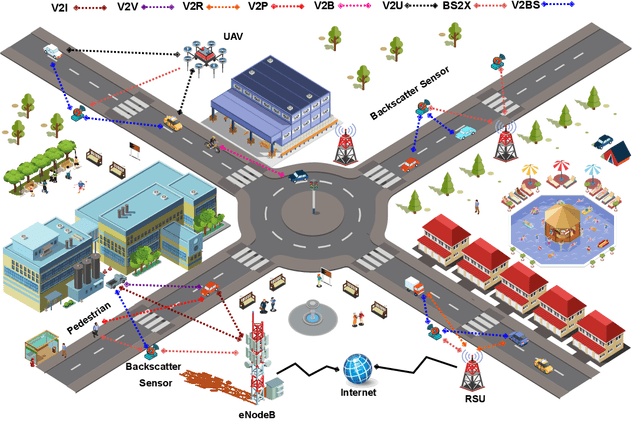
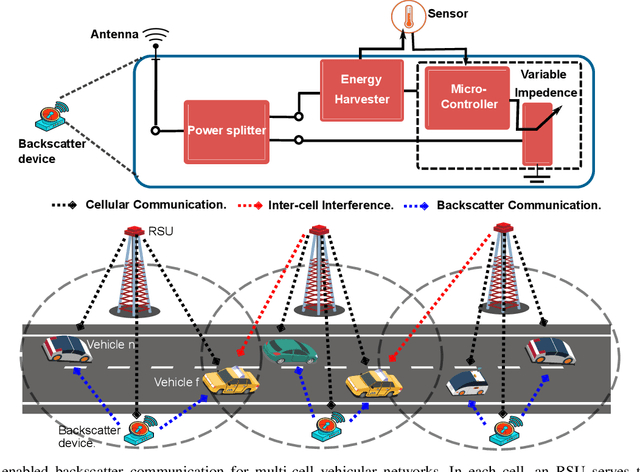
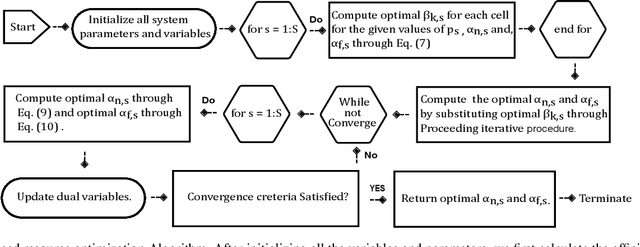
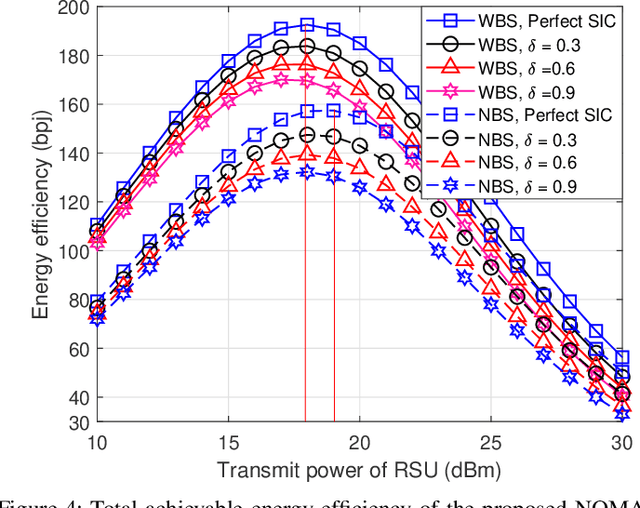
Abstract:Automotive-Industry 5.0 will use emerging 6G communications to provide robust, computationally intelligent, and energy-efficient data sharing among various onboard sensors, vehicles, and other Intelligent Transportation System (ITS) entities. Non-Orthogonal Multiple Access (NOMA) and backscatter communications are two key techniques of 6G communications for enhanced spectrum and energy efficiency. In this paper, we provide an introduction to green transportation and also discuss the advantages of using backscatter communications and NOMA in Automotive Industry 5.0. We also briefly review the recent work in the area of NOMA empowered backscatter communications. We discuss different use cases of backscatter communications in NOMA-enabled 6G vehicular networks. We also propose a multi-cell optimization framework to maximize the energy efficiency of the backscatter-enabled NOMA vehicular network. In particular, we jointly optimize the transmit power of the roadside unit and the reflection coefficient of the backscatter device in each cell, where several practical constraints are also taken into account. The problem of energy efficiency is formulated as nonconvex which is hard to solve directly. Thus, first, we adopt the Dinkelbach method to transform the objective function into a subtractive one, then we decouple the problem into two subproblems. Second, we employ dual theory and KKT conditions to obtain efficient solutions. Finally, we highlight some open issues and future research opportunities related to NOMA-enabled backscatter communications in 6G vehicular networks.
 Add to Chrome
Add to Chrome Add to Firefox
Add to Firefox Add to Edge
Add to Edge